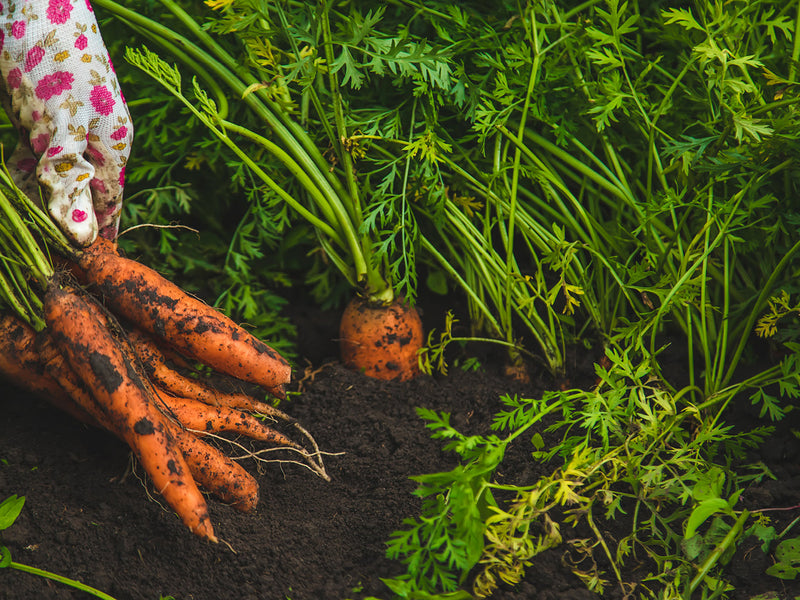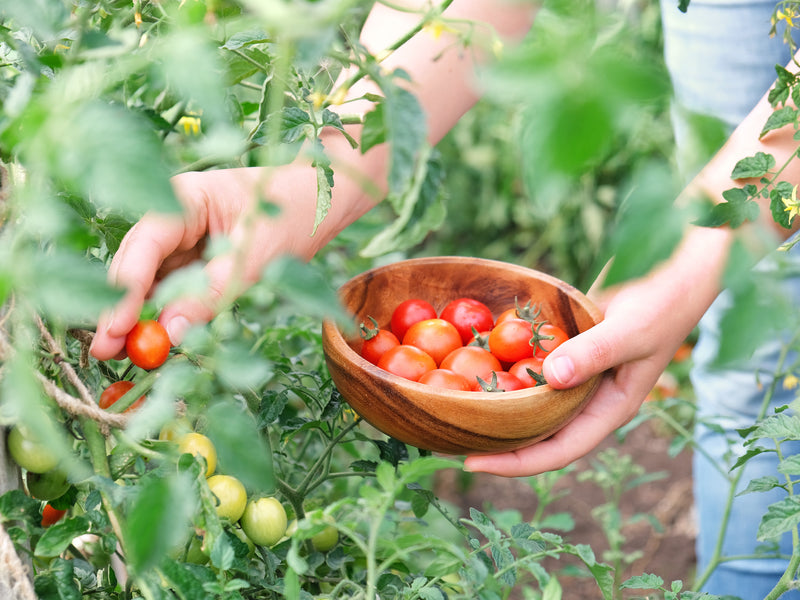
Just because summer is winding down doesn’t mean your garden has to. In fact, fall might be the best time to grow. Cooler temps, fewer pests, and more dependable rainfall all create the perfect environment for growing a wide range of veggies—especially the ones that struggle in the heat of summer.
Read on to learn the many benefits of fall gardening, how to plan ahead for your cool-season crops, and get a full list of what you can plant in fall (and when to start those seeds!).
Benefits of Fall Gardening
1. Fewer Pests
Insects like aphids, beetles, and caterpillars tend to decline as summer fades, giving your crops a better shot at maturing without damage.
2. Cooler Temperatures = Better Flavor
Cool-season veggies like carrots, kale, and broccoli actually taste better when grown in the fall. A touch of frost can even sweeten the flavor of leafy greens and root crops.
3. Less Watering
Autumn often brings more consistent rainfall and cooler air, which helps retain soil moisture. That means less work for you and less stress on your plants.
4. Extended Harvests
With the right timing and a little protection (like row covers or cold frames), you can harvest well into late fall and even winter in many zones.
5. Better Use of Garden Space
As summer crops wind down, you can replant beds that held tomatoes, squash, or beans with new fall crops—getting more out of every square foot.

When to Start Seeds for Fall Gardening
Timing is key when it comes to fall gardening. You want your crops to mature before the first hard frost in your area. A good rule of thumb is to look up your first expected frost date and count backward using the "days to maturity" listed on your seed packet. Then, add a 1–2 week buffer to account for slower growth in cooler weather.
General Seed Starting Guidelines:
-
12–14 weeks before first frost: Start seeds indoors for slow growers like Brussels sprouts and cabbage.
-
10–12 weeks before first frost: Start seeds for broccoli, cauliflower, kale, and collards.
-
8–10 weeks before first frost: Sow beets, carrots, chard, and lettuce directly in the garden.
-
6–8 weeks before first frost: Direct sow radishes, turnips, spinach, arugula, and mustard greens.
-
4–6 weeks before first frost: Sow quick growers like bok choy, green onions, and baby greens.
Start seeds indoors and transplant out after your summer crops are pulled to maximize bed space. If you don't have an indoor seed-starting setup or greenhouse, no problem! The beauty of seed starting now is you can start seeds in trays outdoors in a protected, shaded area. Just make sure they’re out of direct sunlight and safe from wind or heavy rain. This is a great low-maintenance option that still gives you a head start while keeping things simple and accessible.

What to Plant for a Fall Garden
Here’s a breakdown of cool-season crops that thrive in the fall, organized by category:
Leafy Greens:
-
Spinach
-
Lettuce
-
Arugula
-
Mustard greens
-
Collards
-
Bok choy
-
Mache (corn salad)
- Swiss chard
- Endive
Root Vegetables:
-
Carrots
-
Beets
-
Radishes
-
Turnips
-
Rutabaga
-
Parsnips
Brassicas (Cabbage Family):
-
Broccoli
-
Cabbage
-
Cauliflower
-
Brussels sprouts
-
Kohlrabi
- Kale
- Pak choi/Bok choy
Alliums:
-
Green onions (scallions)
-
Leeks
- Shallots
- Garlic (planted in fall for spring harvest)
- Onions (planted in late summer/early fall for a spring harvest)
Legumes:
- Snap peas
- Snow peas
- Fava beans (broad beans)
Herbs:
-
Cilantro
-
Parsley
-
Chervil
-
Dill

Tips for a Successful Fall Garden
-
Prep Your Soil: After summer crops are removed, amend soil with compost or aged manure to give your fall crops a boost.
-
Use Shade Strategically: In early fall, the sun can still be intense. Use shade cloth or companion planting (like taller beans or sunflowers) to keep seedlings cool.
-
Water Consistently: Even though it’s cooler, young fall crops still need consistent moisture to establish well.
-
Protect from Early Frosts: Lightweight row covers or garden fabric can help you extend the growing season and protect tender plants.
-
Succession Sow: Plant in small batches every 1–2 weeks for crops like lettuce, spinach, and radishes to keep your harvest going.
Final Thoughts
Fall gardening offers a fresh start just when your summer garden starts to slow down. It’s a chance to grow sweeter greens, crisper roots, and add beauty and abundance to your beds through the colder months. With just a little planning, your fall garden can be one of the most productive (and low-maintenance) parts of the year.
Happy Growing!
![]()














